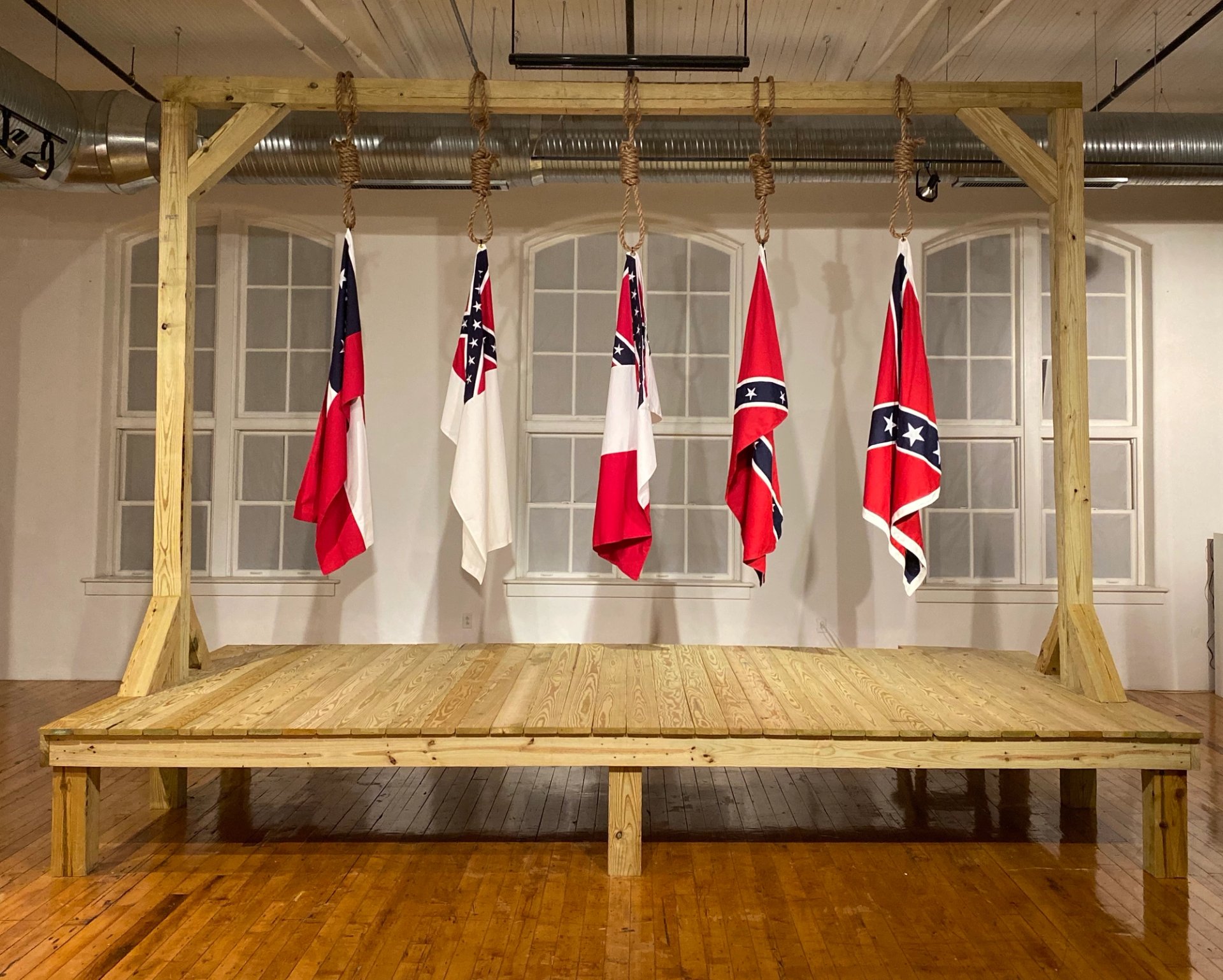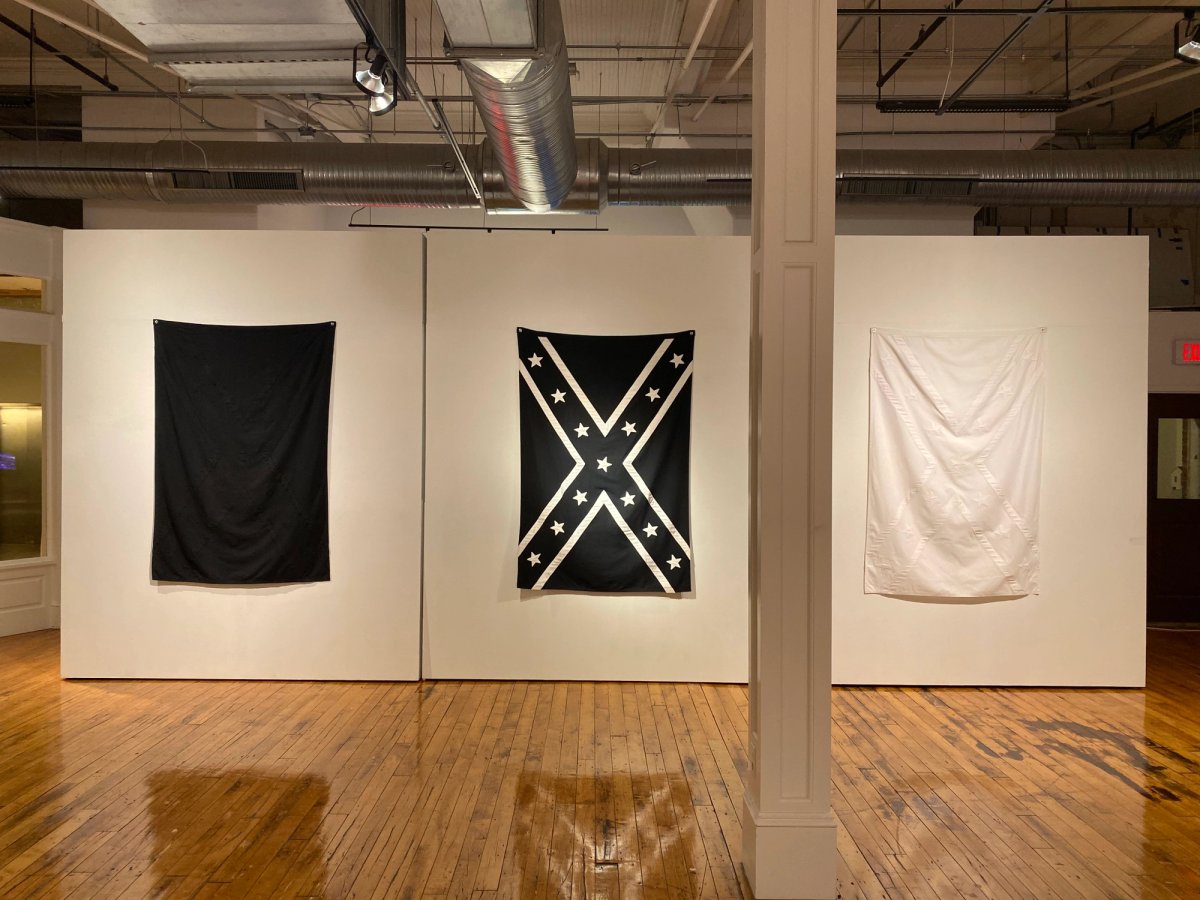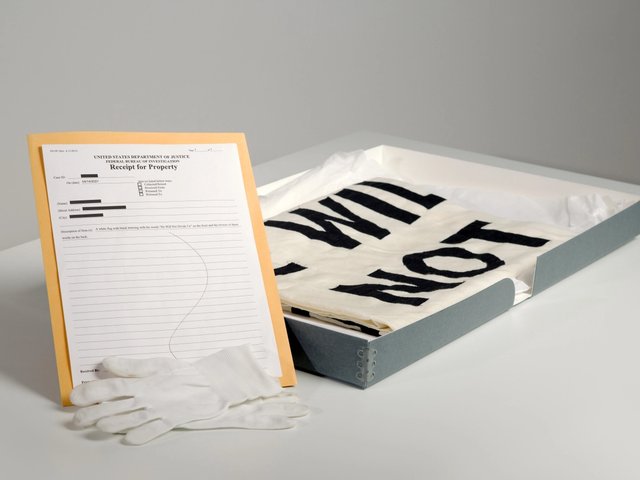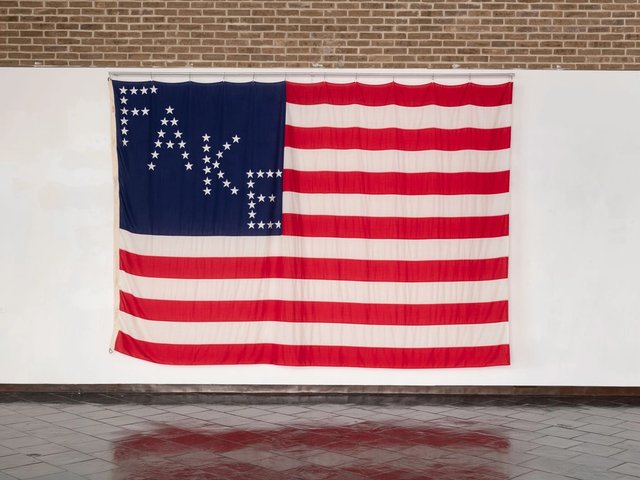John Sims, a Black artist and activist whose work explores the symbols of white supremacy, became an allegory unto himself this week when he was detained and questioned by police officers in his apartment at the 701 Center for Contemporary Art in Columbia, South Carolina, where he is the artist in residence. His current multidisciplinary exhibition there, AfroDixia: A Righteous Confiscation (until 25 June), reimagines the Confederate battle flag as a symbol of hope by transposing its traditional colour scheme.
At around 2am on on 17 May, four police officers spotted an open door that is “usually secured especially after business hours” and began to search the building according to the Free Times. The officers found Sims in his lofted bedroom and—reportedly ignoring the artist's request that they identify themselves—climbed the stairs to his bedroom, guns drawn, and handcuffed the artist for six minutes while they questioned why he was there, the Columbia news site reports.

John Sims, Five Flags: A Group Hanging
Sims is the current artist-in-residence at the art space, and his centrepiece installation in his show there, Five Flags: A Group Hanging, features a gallows with Confederate flags hanging from nooses. The controversial symbol hung over the South Caroline statehouse until 2015, and just last year Confederate flag supporters, who deny its links with racism and white supremacy, waved the banner around the capitol building on the fifth anniversary of its removal.
Sims told the Free Times he was afraid Neo-Nazis, or the Ku Klux Klan, had come to attack him and his exhibition and took cover when he heard the officers enter the building, ready to call the police himself. The officers were not aware there was someone living in the building, according to a police department press release, and Columbia police department Chief W.H. Holbrook said he believes “the officers conducted themselves professionally and within policy”, barring one small mistake: they refused to allow Sims to photograph them.
To Sims, the main issue was his prolonged and unnecessary detainment while the officers checked whether he was actually meant to be living in the apartment. “I don’t know that the reaction to him would have been the same, if it would have been a small White woman, as opposed to a big Black man,” Michaela Pilar Brown, the executive director of the centre, told the Free Times. “They treated him like he was a suspect, as opposed to being concerned for his welfare. And that’s problematic.”





